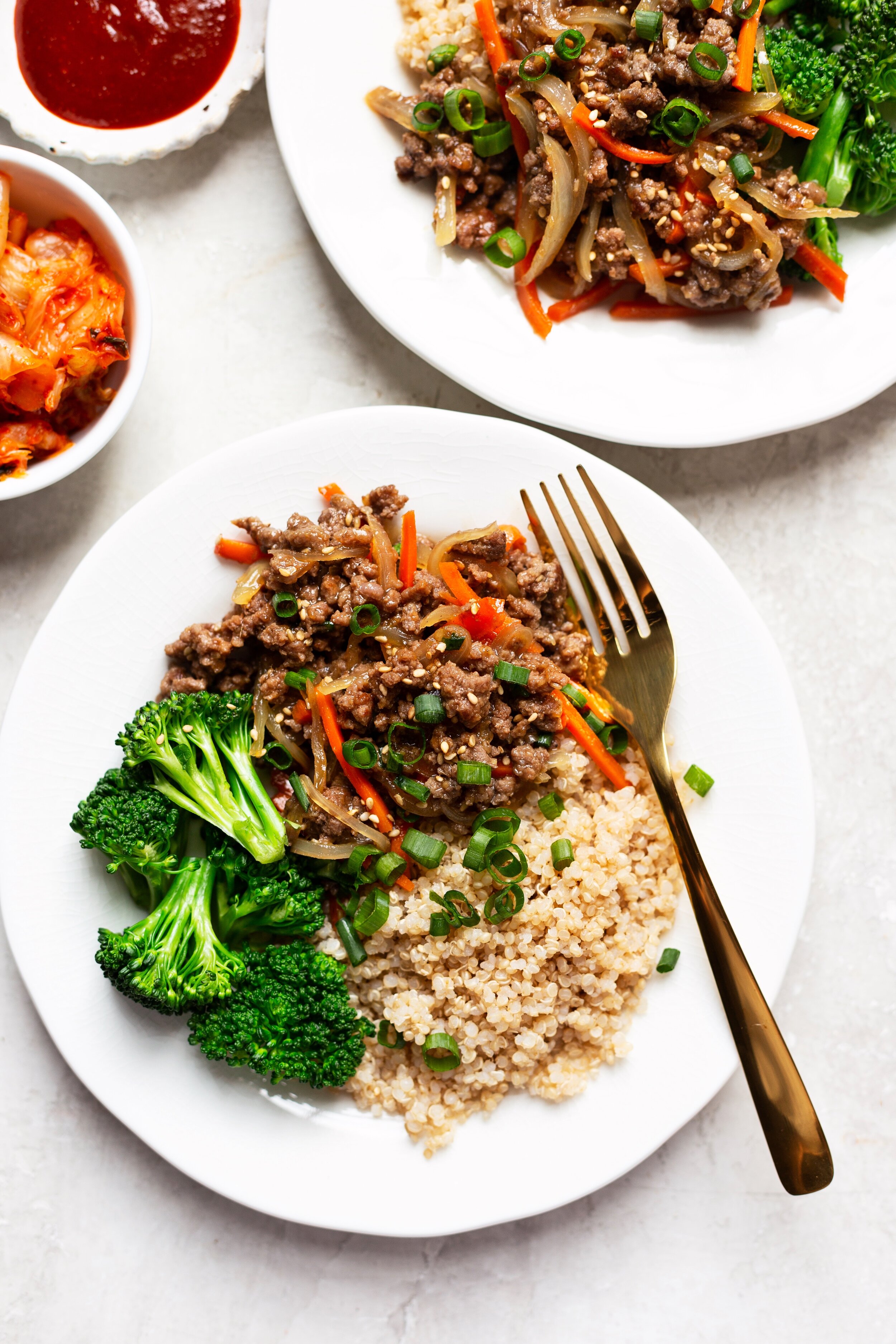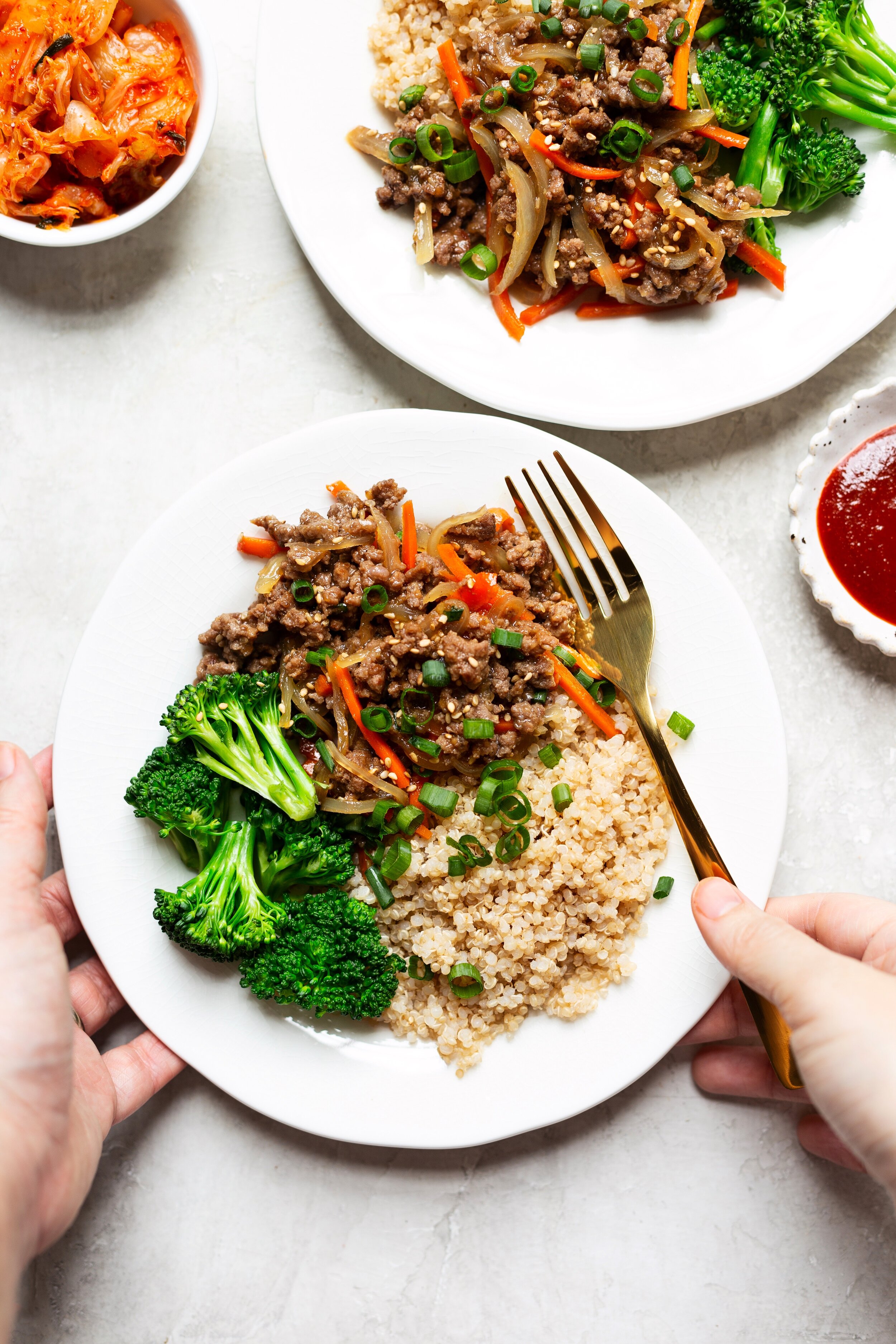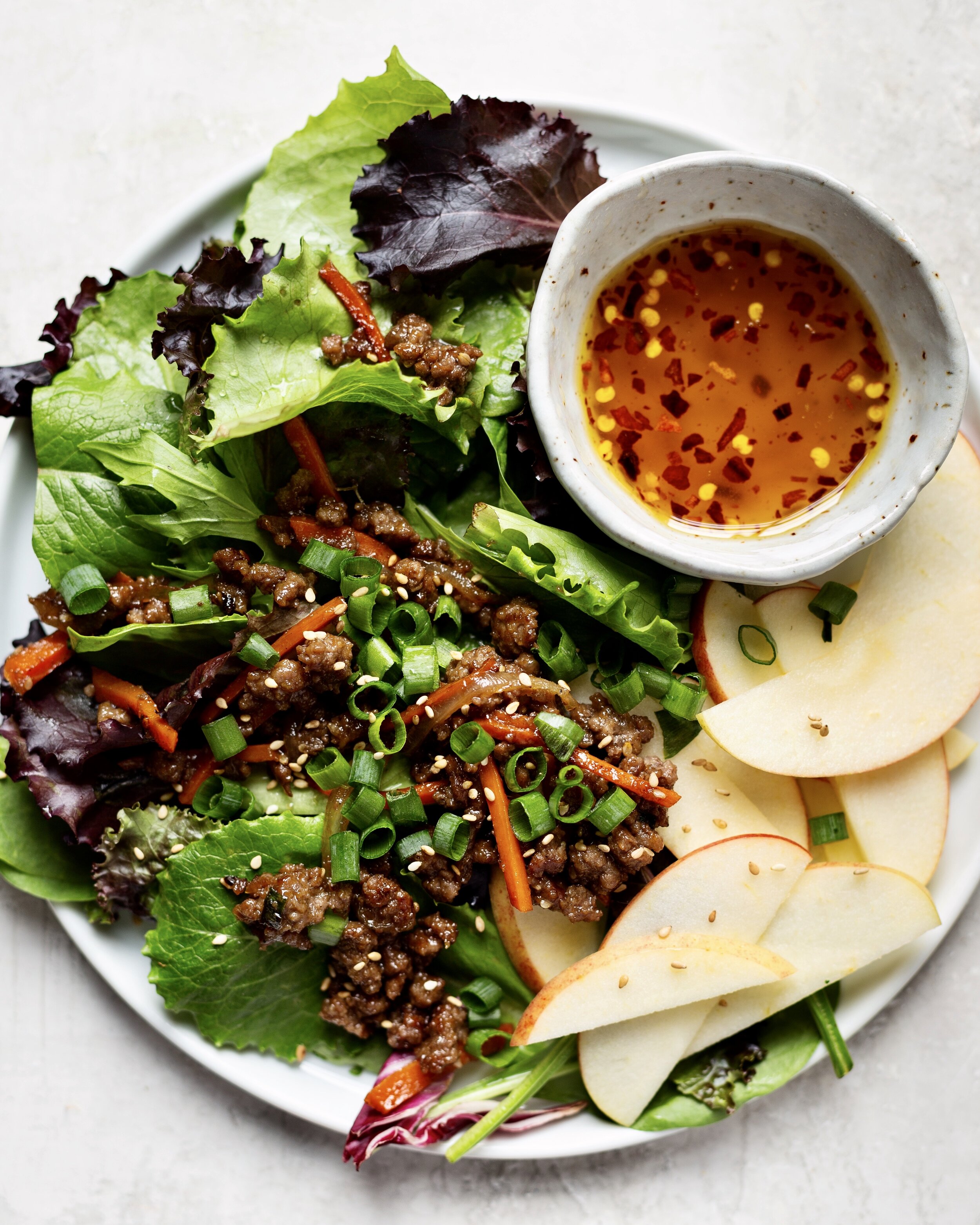Cook Once, Eat Twice: Easy Korean-style Ground Beef
This post is a collaboration with Beef. It’s What’s For Dinner. on behalf of the Beef Checkoff. I received compensation, but all opinions are my own.
Did you know that 40% of all food in America goes uneaten? That food waste cost the average American family $2,500 annually?
I’ve been thinking a lot about the current reality for all of us. Many of us are uncertain about the future, many of us are trying to save as much as possible while feeding our families nutritiously at the same time. A lot of the conversations I’ve had lately are with readers who are trying to find ways to use leftovers in creative ways in order to reduce waste. Beef is one of the least wasted commodities produced in the U.S. - We waste about 20 percent, but could reduce that number by 10 percent simply by cutting waste in half. Learn more about Beef Sustainability by clicking this link. I’d love to share some of the ways I cut down on waste and this easy recipe for Korean-inspired beef or Bulgogi, that makes a delicious leftover salad for you to enjoy the next day.
Shopping for Beef:
The freezer is your ally in the fight against food waste! A few things that I’ve found helpful as I’ve grown into a more confident cook:
- I’ve always gone shopping in my freezer before making a trip to the grocery store. It’s likely that you already have quite a few ingredients hidden in there that can be used.
- Ground beef is versatile. I often purchase it in bulk because it’s what I use most. It can feed many people and is cost-effective, especially as an addition to meals containing vegetables and whole grains. If you happen to purchase beef in bulk, weigh and portion however much you need for specific recipes and freeze them so that defrosting and cooking reduces waste. Vacuum sealing or using airtight containers have always worked for me.
To ensure consumers are armed with knowledge to have the best eating experience with beef, the Beef Checkoff provides some quick tips on how to safely handle and prepare beef when cooking at home. Click this link to learn more.
It’s planned-overs, not leftovers!
This Korean-inspired beef recipe is typically made with thinly sliced ribeye, but because ground beef also cooks quickly it’s a perfect alternative. The flavorful sweet and mildly spicy beef is repurposed very well when used as a salad topper the next day, and you don’t even need much. All you need to do is crisp leftovers up in a skillet , add to fresh greens, and top with slices of apple. Who needs croutons when you’ve got crispy beef?
You’ve usually seen my Instagram images of steak one day and a delicious salad the next - There simply is no better way to ensure that every morsel gets eaten but most importantly, enjoyed! Being intentional when cooking and meal-prepping is key.
- The Dietary Guidelines for Americans recommends that adults consume 5.5 ounces of protein foods per day (on a 2,000 calorie diet), which includes lean meats, like beef. Make leftovers go further by maintaining proper portion sizes and fill the rest of your plate with colorful vegetables.
- Spices and condiments are a great way to turn leftovers into something completely different. For instance, you could cook a pound of ground beef, portion and store it safely in the refrigerator then add different spices to each batch to create different meals. Cooked beef can be stored in the refrigerator at 40 degrees F for a total of 3-4 days to keep meat safe and fresh. Click here for the USDA guidelines for proper cooking of beef - Very handy if you’re meal-prepping and unsure of cooking temperatures.
Beef. It’s What’s For Dinner also has a lot of helpful tips and recipes that you can use to make the most out of whichever cut of beef you have. I’d love to hear some of your ideas!
What do I need to make this recipe?
Just one pound of beef and the above ingredients. Most are available at your local grocery store. Mushrooms are really delicious in this recipe as well, but not mandatory.
Recipe: Easy Korean-style Beef
Prep Time: 15 minutes + 1 hour marinating time
Cook Time: 10 minutes
Serves: 4
Ingredients
1 pound Ground Beef
1 medium yellow onion, halved
1 small apple, peeled and cut into quarters
4 cloves garlic
1 tablespoon toasted sesame seeds plus more to serve
1 tablespoon ginger paste
1 teaspoon black pepper
1 tablespoon sesame oil
1 ½ tablespoons honey
2-3 tablespoons low-sodium soy sauce
1-2 carrots, cut into matchsticks
1 bunch green onions, chopped
Equipment: Blender, large skillet.
Method:
Place half the onion, apple, garlic, sesame seeds, ginger paste, pepper, red pepper flakes, sesame oil, honey and soy sauce in the jar of a food processor. Puree until smooth.
Place Ground Beef in a mixing bowl and pour marinade over. Use a spoon to gently mix and cover. Refrigerate beef for a minimum of 30 minutes to 2 hours.
When ready to cook, remove beef from the refrigerator and slice the remaining onion. Add to skillet with beef and carrots then cook over medium heat for 5 minutes, stirring constantly. Add green onion and cook for another 5 minutes until cooked through. Sprinkle with extra sesame seeds and serve with your favorite side dishes. Refrigerate any leftovers for tomorrow!
Crispy Beef Salad with Apple
Prep Time: 5 minutes | Cook Time: 5 minutes | Serves: 2
Ingredients:
6 -ounces leftover Korean-style Ground Beef
4 cups washed tender green lettuce
1 small apple, sliced
¼ cup chopped green onion
For the vinaigrette:
2 tablespoons apple cider vinegar
1 tablespoon olive oil
1 tablespoon honey or maple syrup
½ teaspoon red pepper flakes
Method:
Reheat beef in a small skillet over medium heat until lightly caramelized, 5 minutes. Remove from heat and set aside. Plate 2 cups of lettuce per person, top with beef and apple, followed by green onion.
Place vinaigrette ingredients in a jar and shake until emulsified. Divide amongst servings and enjoy!









